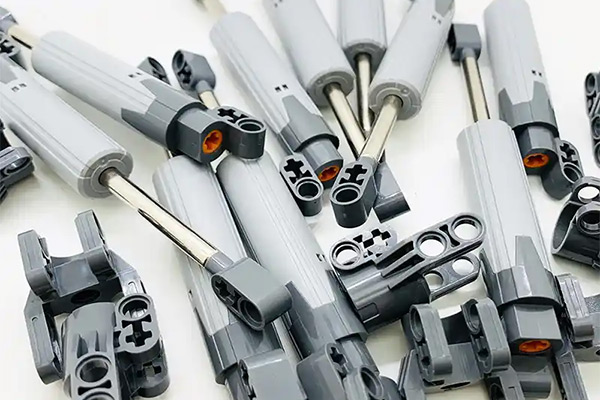The Core Role of the Hall Effect in Motor Control
In modern industry and daily life, motors are ubiquitous, powering everything from large factory production lines to home fans and vacuum cleaners. To ensure these motors operate efficiently and precisely, a sophisticated control system is essential. Among these, the Hall controller plays a pivotal role in motor control due to its unique operating principle. By leveraging the physical phenomenon of the Hall effect, it provides motors with "eyes" and a "brain," ensuring their stable and efficient execution of various tasks.
The Hall Effect: The "Eyes" of Motor Control
To understand the Hall controller, we must first delve into the Hall effect. Simply put, when an electric current passes through a conductor placed in a magnetic field, a transverse voltage is generated perpendicular to both the current and the magnetic field. This voltage is the Hall voltage. The brilliance of the Hall effect lies in its ability to convert changes in magnetic field strength into measurable electrical signals.
In motor control, especially for Brushless DC (BLDC) motors, the rotor (the rotating part) typically contains permanent magnets. As the motor rotates, the magnetic field generated by these permanent magnets changes with the rotor's position. Hall sensors utilize the Hall effect to sense these magnetic field variations. They are precisely mounted at specific locations on the motor's stator (the stationary part). As the rotor turns, the sensors sequentially detect changes in the magnetic field and output corresponding electrical signals. These signals act as "real-time coordinates" of the motor's rotor, informing the controller of its current position. Thus, Hall sensors function as the "eyes" of the motor control system, continuously monitoring the rotor's trajectory.
The Hall Controller: The "Brain" of Motor Control
The Hall controller is an electronic control unit that operates based on signals from Hall sensors. It's not just a simple receiver of Hall sensor signals; it's a "brain" that integrates processing, logical judgment, and output drive capabilities.
The core functions of the Hall controller include:
Position Detection and Commutation: This is the most fundamental and crucial function of the Hall controller. BLDC motors are called "brushless" because they lack traditional brushes and commutators. Their commutation is electronic, achieved by changing the direction and sequence of current in the stator windings. Upon receiving position signals from the Hall sensors, the Hall controller precisely determines the rotor's current position. Based on this positional information, it promptly adjusts the direction of the current flowing through the stator windings. This precise electronic commutation is vital for the efficient and smooth operation of BLDC motors.
Speed Control: The Hall controller can regulate the motor's speed by adjusting the voltage applied to the motor or the duty cycle of a Pulse Width Modulation (PWM) signal, according to the input command (e.g., user-set speed). It continuously monitors the speed feedback from the Hall sensors and compares it with the target speed, forming a closed-loop control to precisely maintain the desired motor speed.
Direction Control: By altering the sequence of current flow through the stator windings, the Hall controller can easily control the motor's rotation direction, enabling forward and reverse operation.
Fault Protection and Diagnostics: Advanced Hall controllers may also integrate protection features such as overcurrent, overvoltage, undervoltage, and overheating. They can stop motor operation or issue alerts in case of abnormal conditions, thereby protecting the motor and the entire system. Some controllers can also provide basic fault diagnostic information.
Advantages of Hall Controllers in Motor Applications
Hall controllers offer a series of significant advantages in motor control, particularly for BLDC motors:
High Efficiency: Precise electronic commutation minimizes energy loss, resulting in higher energy conversion efficiency for BLDC motors and thus energy savings.
Long Lifespan and High Reliability: The brushless design eliminates brush wear issues, significantly extending motor lifespan and reducing maintenance costs. Hall sensors themselves are non-contact, contributing to their long life and high reliability.
Low Noise and Low Vibration: Accurate commutation and smooth torque output lead to quieter and smoother operation of BLDC motors.
Precise Control: Enables highly accurate control of motor speed, position, and direction, meeting the demands of various complex applications.
Miniaturization and Lightweight: Compared to brushed motors, BLDC motors have a more compact structure. Combined with miniaturized Hall controllers, the entire drive system becomes smaller and lighter.
Typical Application Fields
Hall controllers and the BLDC motors they control are widely used in various fields:
Home Appliances: Inverter air conditioners, washing machines, refrigerators, vacuum cleaners, hair dryers, etc., enhancing appliance energy efficiency and user experience.
Electric Vehicles: Electric bicycles, electric motorcycles, electric cars, providing efficient power output and precise speed control.
Industrial Automation: Robot joints, CNC machine tools, automated production lines, requiring high precision and reliability in motor control.
Aerospace and Medical Devices: Fields with extremely high demands for precision, reliability, and lightweight solutions.
Drones and Models: Providing lightweight and highly efficient power systems.
Conclusion
The Hall effect, a fascinating phenomenon in the physical world, has been cleverly transformed into a key technology in motor control through Hall controllers. It provides motors with precise "eyes" and an intelligent "brain," allowing Brushless DC motors to achieve their outstanding performance in terms of high efficiency, long lifespan, and low noise. With continuous technological advancements, Hall controllers will continue to demonstrate their core role in more cutting-edge fields, pushing motor control technology to new heights and continuously empowering our smart lives and industrial development.





